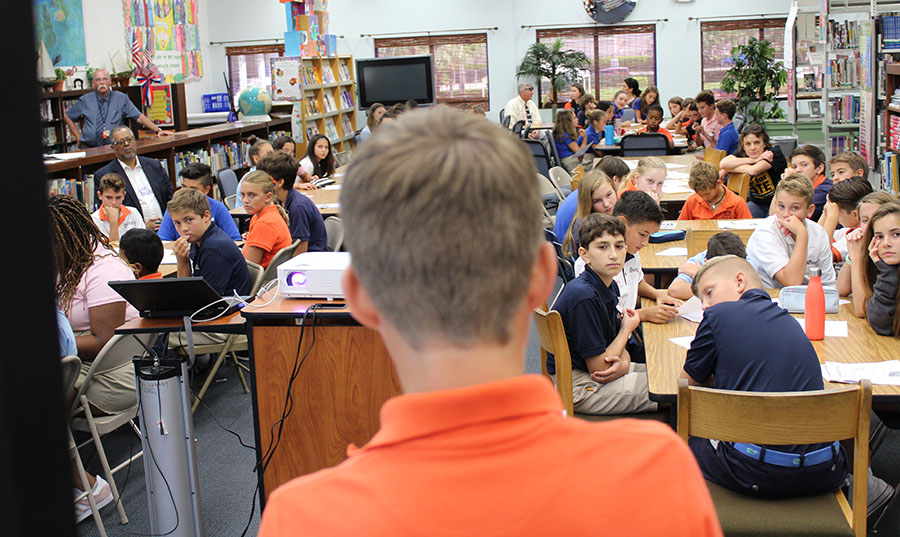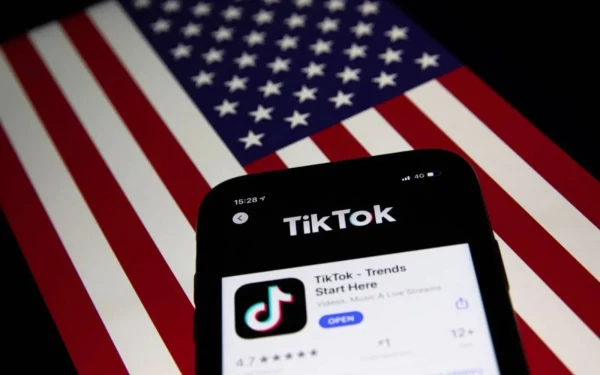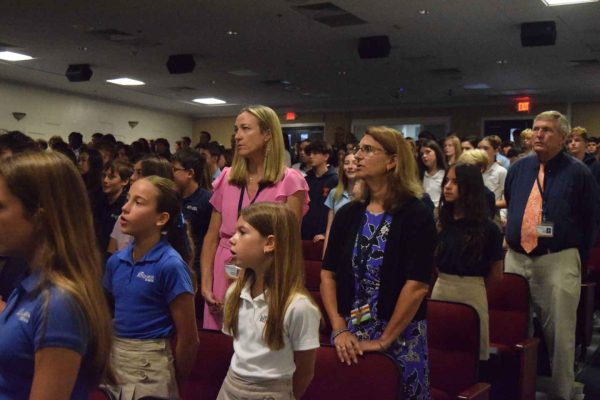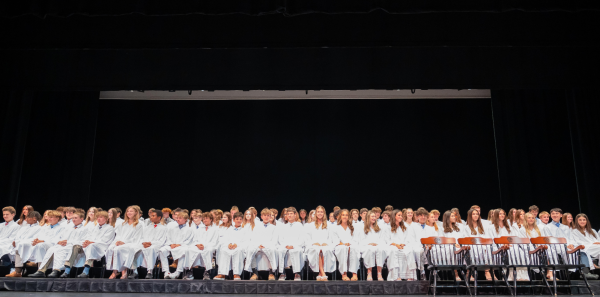Is The ADL Making a Difference?
Seventh grader William Harris makes his group’s presentation in the library/media center based upon a worksheet the students completed during the ADL training.
True. Kind. Necessary. Students remember these words from Lower School, and the same general idea has carried over to Middle School. In an effort to help students treat each other as they would want to be treated, Benjamin’s middle school administration has invited the Anti-Defamation League (ADL) to speak to its students for the past six years. The most recent visit was Thursday, August 17. The sixth graders had their program in the gym, the seventh graders had theirs in the library/media center, and the eighth graders received their training in the Barker Performing Arts Center. However, is the ADL’s message of acceptance and tolerance really working?
Head of Middle School Mr. Charles Hagy thinks so. “We know when students are getting bullied because we give them a little quiz online to see how they’re feeling about their teachers and the other students around them,” Hagy said. He added that he constantly sees “students advocate for one another,” and said “if something were to happen, student advocates are there to help, and report the incident.”
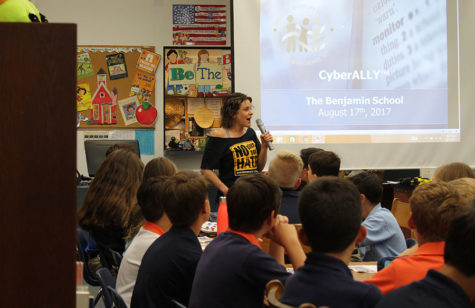
ADL representative Tracey Grossman introduces the program for the seventh graders in the library.media center on Thursday, August 17, 2017.
Still, according to www.stopbullying.gov, a website which provides information from various government agencies about bullying and cyberbullying and how to prevent each, one in three students in the U.S. experience bullying. Per the ADL, modern bullying circles around something called microaggressions. Defined by the ADL, microaggressions are “everyday indignities, put-downs, and insults that people of color, women, the lesbian, gay, bisexual, and transgender populations and other marginalized people experience in their day-to-day interactions.” Basically, the ADL warned Benjamin students that microaggressions can lead to more serious bullying behavior such as name-calling, exclusion, and violence. To illustrate this, the ADL representatives showed TBS students a video where a middle school-aged student was being bullied while other students (bystanders) simply stood around and watched. After the video, the ADL representatives asked the Benjamin students how it made them feel. Then the students wrote down ways bystanders in that situation could help, allowing them to become “upstanders.”
Despite how repetitive the ADL’s spiel may be from year to year, for some students, it was educational and good food for thought.
“The training made me realize how [microaggressions and bullying] make people feel,” said eighth grader Casey Crawford, “and [the ADL] went more in depth on how microaggressions can bring someone down.”
“The ADL training helped me realize that cyberbullying can hurt more than regular face-to-face bullying,” said fellow eighth grader Zach Loceff.
These viewpoints suggest that the ADL is making a difference amongst the students in The Benjamin Middle School. Students are learning the difference between right and wrong and how the littlest comment can impact someone. Both the administration and the students alike think this is working and will help keep bullying to a minimum. The students still have their parts to play, and should continue to heed the mantra of Mrs. Nancy Benjamin, the School’s co-founder: “Be kind, be kind, be kind.”
